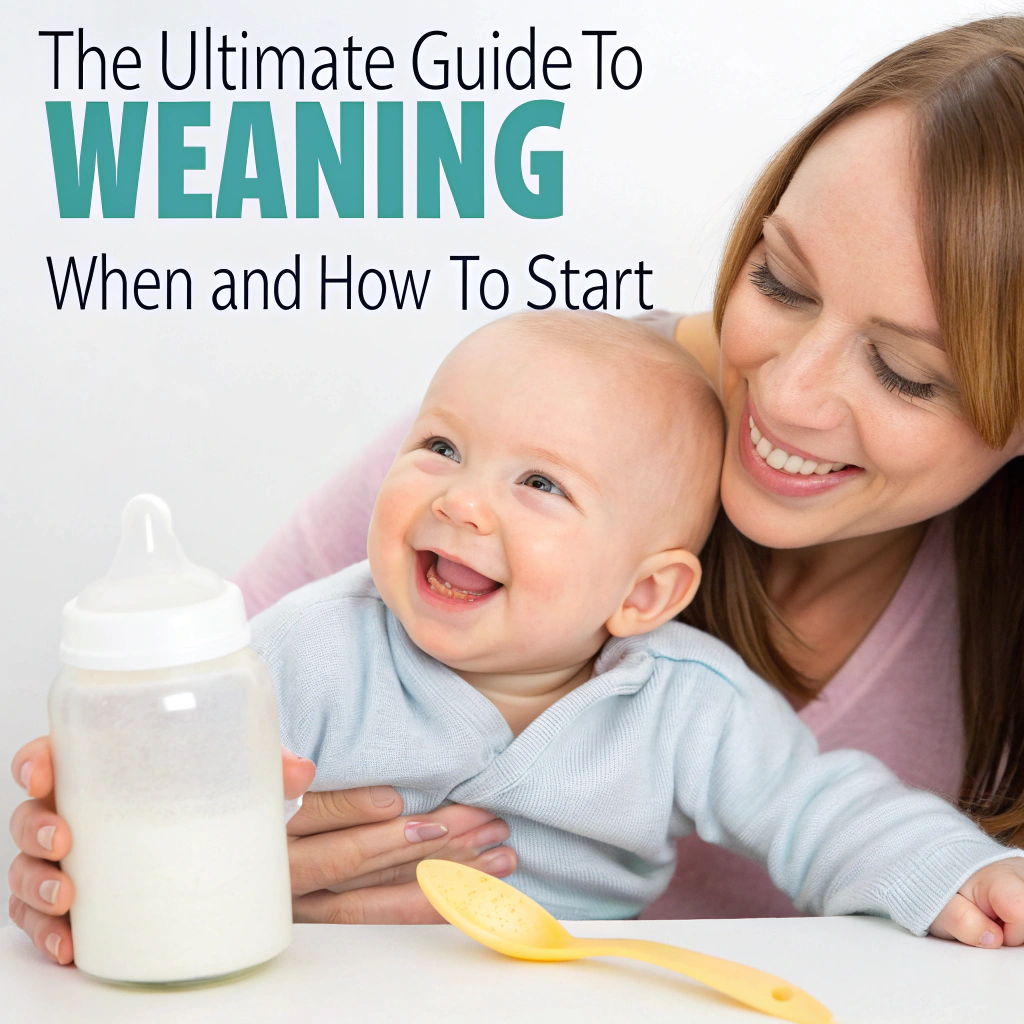Weaning is a significant milestone in your baby’s development, marking the transition from exclusive milk feeding (breastfeeding or formula) to introducing solid foods. This process can be both exciting and challenging for parents. This comprehensive guide will walk you through when to start weaning, how to do it effectively, and provide practical tips to ensure a smooth and enjoyable experience for both you and your baby.
When to Start Weaning ?
The timing of weaning is crucial for your baby’s health and development. Most health organizations, including the World Health Organization (WHO), recommend starting weaning around six months of age. However, every baby is different, so it’s essential to look for developmental signs that indicate your baby is ready:
- Physical Readiness: Your baby can sit up with minimal support and hold their head steady.
- Interest in Food: They show curiosity about what you’re eating, reaching for food or watching you eat intently.
- Loss of Tongue-Thrust Reflex: This reflex, which pushes food out of the mouth, diminishes around six months, making it easier for babies to swallow solids.
- Increased Appetite: Your baby may seem hungrier than usual, even after regular milk feeds.
If you’re unsure whether your baby is ready, consult your pediatrician for personalized advice.
How to Start Weaning ?

Starting the weaning process can feel overwhelming, but breaking it down into manageable steps can make it easier. Here’s a step-by-step weaning guide to help you navigate when and how to start:
1. Choose the Right First Foods
Begin with single-ingredient, easy-to-digest foods. Some great options include:
- Vegetables: Pureed carrots, sweet potatoes, or butternut squash.
- Fruits: Mashed bananas, avocados, or cooked and pureed apples or pears.
- Cereals: Iron-fortified baby rice or oatmeal mixed with breast milk or formula.
Avoid foods that are choking hazards, such as nuts, grapes, or hard raw vegetables.
2. Introduce Foods Gradually
Introduce one new food at a time and wait 2-3 days before offering another. This helps you identify any potential allergies or intolerances. Watch for signs like rashes, diarrhea, or vomiting, and consult your doctor if you notice any adverse reactions.
3. Maintain Milk Feeds
Solid foods are complementary at this stage, so continue breastfeeding or formula feeding as usual. Milk remains the primary source of nutrition for your baby until they’re around one year old.
4. Encourage Self-Feeding
As your baby grows, usually around 8-9 months, introduce finger foods to encourage self-feeding. Soft, bite-sized pieces of cooked vegetables, fruits, or toast are excellent options. This helps develop their fine motor skills and independence.
5. Experiment with Textures and Flavors
Gradually move from purees to mashed, lumpy, and eventually chopped foods. Introducing a variety of textures and flavors helps your baby develop a diverse palate and reduces picky eating later on.
Tips for a Smooth Weaning Process
- Follow Your Baby’s Cues: Let your baby guide the pace. If they turn their head or refuse food, don’t force it. Try again another time.
- Create a Positive Mealtime Environment: Sit together as a family, make mealtimes fun, and avoid distractions like TV or phones.
- Avoid Added Salt and Sugar: Babies’ kidneys are not mature enough to handle salt, and sugar can lead to unhealthy eating habits.
- Stay Consistent: Offer solids at the same time each day to establish a routine.
- Be Patient: Weaning is a learning process for your baby. It’s normal for them to take time to adjust to new tastes and textures.
Common Challenges and Solutions
- Food Refusal: If your baby refuses certain foods, don’t give up. It can take 10-15 tries for a baby to accept a new food.
- Messy Mealtimes: Weaning can be messy, but it’s part of the process. Use bibs, splat mats, and easy-to-clean high chairs to make cleanup easier.
- Allergies: If you have a family history of food allergies, introduce common allergens (like peanuts, eggs, or dairy) one at a time and in small amounts. Consult your pediatrician for guidance.
Conclusion
Weaning is a journey that requires patience, flexibility, and a lot of love. By starting at the right time, introducing foods gradually, and following your baby’s cues, you can make this transition a positive experience for both of you. This weaning guide has provided you with the essential information on when and how to start, ensuring a smooth and enjoyable process.

